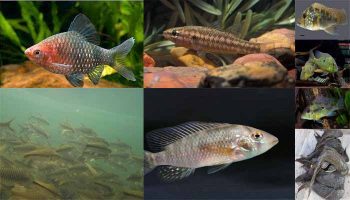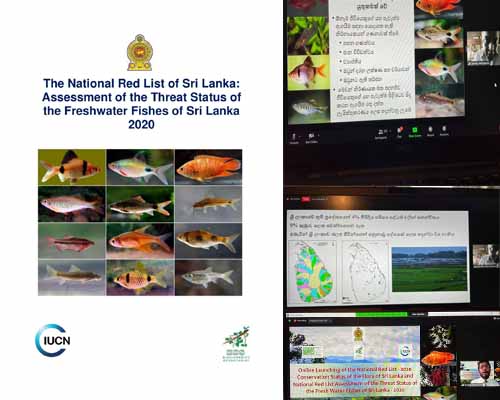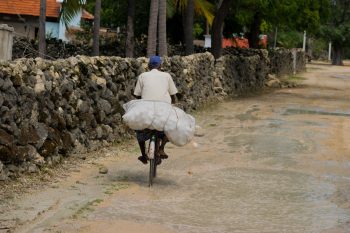Urgent need to conserve Sri Lanka’s freshwater fish species


The surface water resources of Sri Lanka extend over 4% of the land extent and comprise of both natural and manmade systems. The natural freshwater sources include the rivers, villus and marshes while the manmade systems include ponds, irrigation canals and large number of small, medium, and large tanks. A further 9% of Sri Lanka’s land extent comprise of rice paddy that retains water over much of its growth cycle. This wide array of freshwater ecosystems provides habitats to a large number of freshwater dwelling species including fish. Sri Lanka has a rich freshwater fish fauna that comprise of 47 native species, 61 endemic species and around 30 introduced species. Most of the endemic and threatened freshwater fish species occupy habitats outside the protected area network and therefore subjected to many anthropogenic influences that has resulted in sharp decline in freshwater fish population as well as local extinctions. Therefore, there is an urgent need to take steps to conserve the freshwater fish of Sri Lanka, especially those species that have a high risk of extinction.

The Red List is one of the best indicators of the health of a species as it is an assessment that takes into consideration most of the internal and external factors that influence the long term survival of the species being assessed. It is a very useful tool that provides the basis for planning conservation action as well as policy and research directions. The preparation of Red List is done at both Global and Local levels as some species occur in more than one country and as such their long-term survival depends on the status of the species in each of the range states. Whereas, for the endemic species the national and global status should be the same. However, Sri Lankan freshwater fish, especially endemic species are underrepresented in the global Red List. The last national assessment of the freshwater fish was carried out in 2012, by the Biodiversity Secretariat with inputs from a freshwater expert panel using Red List™ criteria and ninety-one species, including 50 endemic species were assessed. However, at least 12 new species have been added to the freshwater fish list of Sri Lanka and the distribution status of many species have changed due to taxonomic revisions.
Therefore, in 2019 Biodiversity Secretariat of the Ministry of Environment together with IUCN Sri Lanka has undertaken an Red List assessment with the aim of update the National Red List as well as the global Red List with respect to endemic freshwater fish of Sri Lanka. Altogether 97 species including 61 endemic species were assessed and the results were published in the form of a book. The National Red Lists of Freshwater Fish and Flora was launched on 3rd September 2020 under the patronage of the Minister of Environment.
Fifty-three out of 97 assessed species were determined to be threatened during this assessment. Further, 74% of the freshwater fish endemic to Sri Lanka were found to be threatened. Out of the 61 endemic species assessed, 12 species were listed as Critically Endangered (CR); 24 were listed as Endangered (EN) and nine species were listed as Vulnerable (VU). A further, five species were listed as Near Threatened (NT); two species as Data Deficient (DD); and the remaining species were listed as Least Concern (LC). Out of the 61 endemic species accessed the status of 59 were updated in the global Red List. Two species whose taxonomic status is yet to be resolved was held back and will be updated in the global list once the validity of the species is confirmed. Among the 36 native species assessed, eight species were listed as Threatened. Therefore, compared to native species, the endemic species are facing a significantly high risk of extinction. Thus, urgent planned conservation actions are needed at least for endemic species that are Threatened with extinction in order to prevent their imminent extinction. A list of immediate actions that should be taken to address this issue has been outlined in the book including the need to conduct planned systematic surveys, development and implementation of recovery plans at least for the 12 critically endangered species, updating the Red List at least on an annual basis, conducting further research on threatened species to inform recovery planning process and create awareness among citizens to reduce the drivers that are operating on freshwater fish of Sri Lanka.






